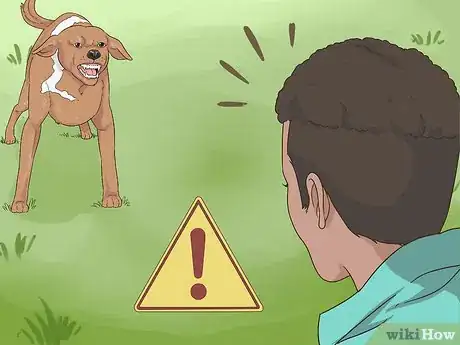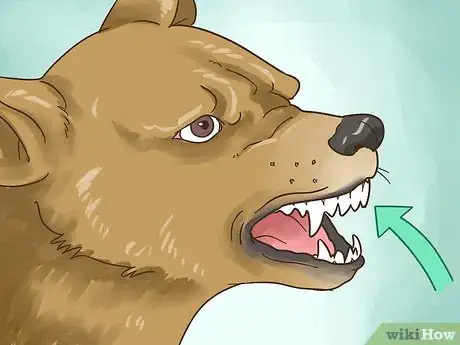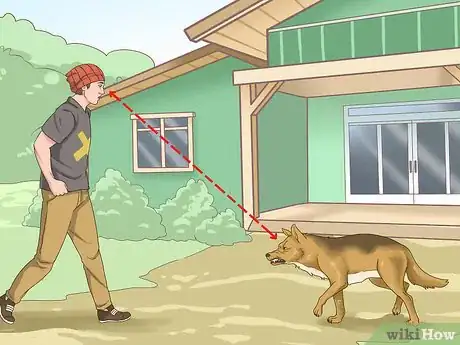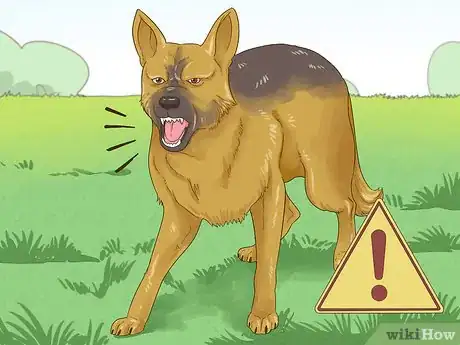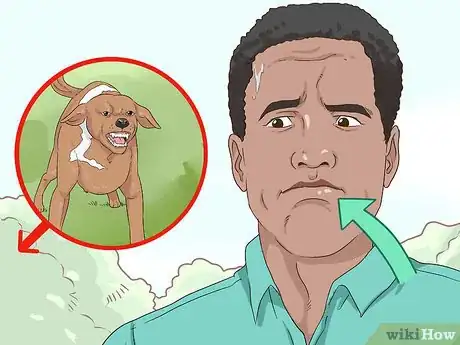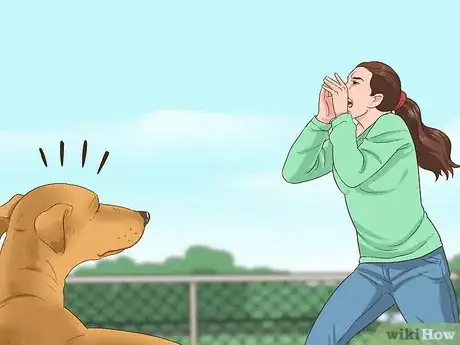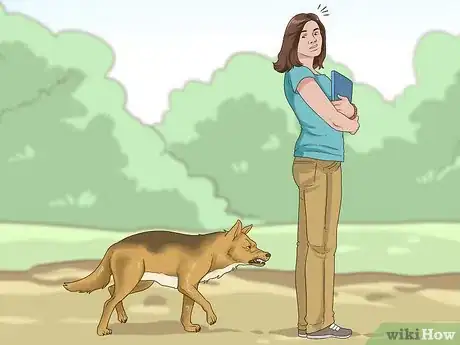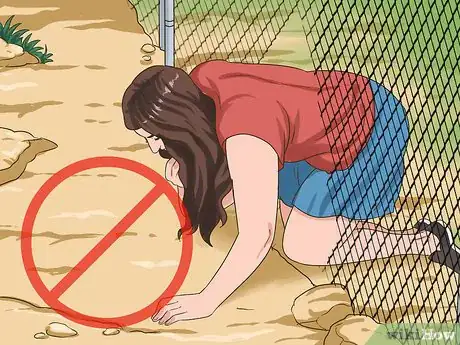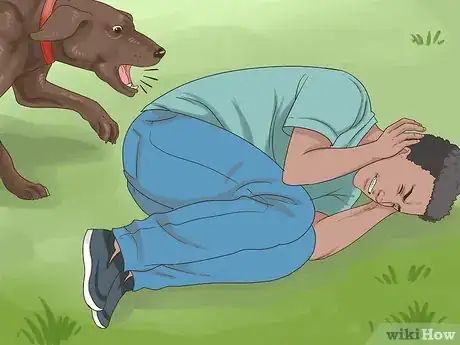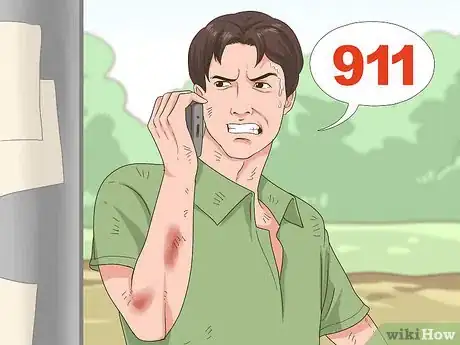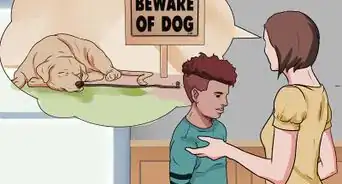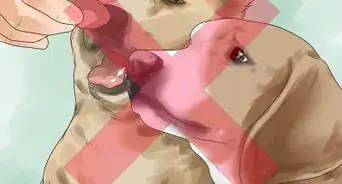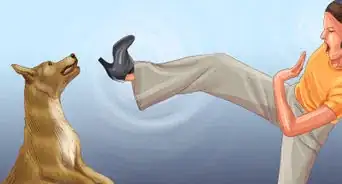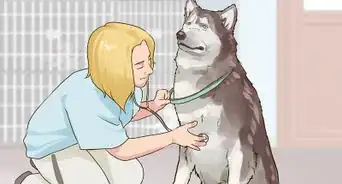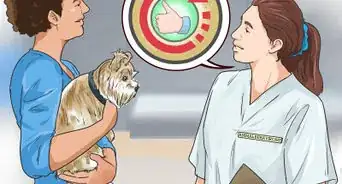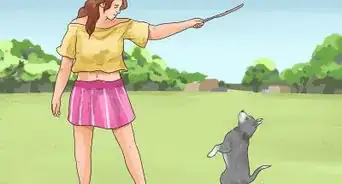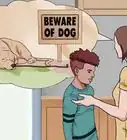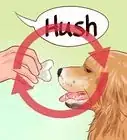This article was co-authored by Deanne Pawlisch, CVT, MA. Deanne Pawlisch is a Certified Veterinary Technician, who does corporate training for veterinary practices and has taught at the NAVTA-approved Veterinary Assistant Program at the Harper College in Illinois and in 2011 was elected to the board of the Veterinary Emergency and Critical Care Foundation. Deanne has been a Board Member of the Veterinary Emergency and Critical Care Foundation in San Antonio, Texas since 2011. She holds a BS in Anthropology from Loyola University and an MA in Anthropology from Northern Illinois University.
There are 9 references cited in this article, which can be found at the bottom of the page.
This article has been viewed 24,853 times.
Most dogs are friendly, gentle companions. However, there are some dogs who are more aggressive, territorial, or just simply unfriendly. An attack dog usually exhibits many warning signs, but it's important to know how to fight back if necessary. If you come across an attack dog, knowing what to do will help ensure you handle the situation properly.
Steps
Recognizing Signs of Aggressive Behavior
-
1Listen for growling. If a dog is growling at you, this can be a sign that they are not happy with your presence and may attack you. A growling dog is notifying you that they do not want you in their territory and they feel threatened.[1]
- Be especially cautious if you hear low, guttural growls and barks coming from the dog.
-
2Watch for visible teeth. If a dog shows their teeth to you, this is a bad sign. Bared teeth is a warning that dogs send to ward off potential threats. This is meant to be an intimidating defense mechanism toward any perceived danger.[2]
- This is an especially worrisome sign if it is combined with snarling and/or upright, pointed ears.
Advertisement -
3Notice direct eye contact. If a dog is looking directly at you, this is not a good sign. Eye contact is considered aggressive behavior in dogs and can mean that a dog is on the verge of attacking you.[3]
- Think about any nonaggressive dogs you know – they usually avert their eyes to avoid extended eye contact as a sign of submission and affection.
- If a dog doesn't avert their eyes and maintains eye contact with you, this is a sign of aggression.
-
4Monitor lunging behavior. When a dog intends to attack, they may make some smaller lunging motions before actually attacking. If a dog is lunging forward at you, this is a pretty clear sign they mean to warn or attack you.[4]
- This is especially dangerous behavior when it is combined with some of the other warning signs like snarling and growling.
Avoiding a Dog Attack
-
1Keep your lips closed and avoid direct eye contact. You may be putting on a friendly face, but an aggressive dog might interpret a smiling face as you baring your teeth for a fight. Keep a calm, serious face when you are confronted with an angry or aggressive dog, and make sure to avoid making eye contact with the dog.[5]
- Keep your mouth closed and your teeth covered at all times.
- Avoid making eye contact with the dog as well. Your best bet is to fold your arms and turn away from the dog. Try to ignore the dog completely.
-
2Say “no” firmly. Loud noises often frighten dogs and may provoke them to attack, so it is best to avoid yelling at the dog or making loud noises. However, you can say “no” firmly if the dog seems ready to attack. “No” may be a familiar word to the dog and saying it firmly may be enough to get them to stop.
-
3Carry a dog repellent. If you have to walk through areas where you know dangerous dogs may be, try to bring an air horn, pepper spray, or a dog repellant spray along with you. These can be effective tools in warding off an attack dog.[6]
- Of course, don't go around pepper spraying dogs or blasting an air horn unless they are actually about to attack you.
- If you must walk in an area that is known to have aggressive dogs that sometimes get loose, consider carrying an air horn.
- Avoid physically attacking a dog because this may cause their behavior to escalate.
-
4Refrain from running. If you run away from a dog, this can engage their instinct to chase you. If a dog is chasing you, it is more likely that it will attack you when it reaches you. Remain still and motionless for as long as possible.[7]
- Try to back away from the dog slowly, without turning your back on the dog.
- You can also try getting on top of a nearby parked car.
-
5Avoid areas where aggressive dogs may be. The best method for preventing a dog attack is to never encounter one in the first place. Do your best to avoid areas where there may be aggressive dogs roaming free. Don't approach dogs that you don't know, even if you have their owner's permission.
- Don't ever enter a fenced area where a dog may be without the owner present.
- If you've seen dogs roaming loose in certain neighborhoods, avoid those places when possible.
Knowing What To Do If You Are Attacked
-
1Shield yourself with something. If a dog attack is unavoidable, try to get something to put in between you and the dog. This will help protect you from getting bitten by the dog and may distract the dog from attacking you altogether.[8]
- Look for anything around that you can use as a shield. Use your purse or backpack; grab a tree branch off the ground. Try to find anything that could act as a buffer between you and the dog.
- It is especially important to cover your head. If you cannot protect any other part of you, then put your arms up over your head to protect it.
-
2Roll up in a ball. You may need to consider protecting yourself. Roll up into a ball on the floor and bring your knees up to your chin. Cover your head with your hands and arms. This will help protect your most vital and sensitive body parts from being damaged in the attack.[9]
- This is a form of “playing dead” which may cause the dog to become bored and abandon the attack altogether.
-
3Seek immediate medical treatment for your wounds. Once the attack is over, you need to seek medical treatment for your wounds. If you have been bitten by a dog, then go to the hospital immediately. Do not attempt to care for the bite yourself because a bite from a rabid dog can be fatal. Seek immediate medical attention if a dog bites you.[10]
- Also, make sure to call the authorities to report the attack as soon as you are out of danger and have had your wounds treated.
Warnings
- Avoid areas where you know dangerous dogs roam free.⧼thumbs_response⧽
References
- ↑ http://www.aspca.org/pet-care/dog-care/common-dog-behavior-issues/aggression
- ↑ http://www.humanesociety.org/animals/dogs/tips/aggression.html
- ↑ http://www.petful.com/behaviors/warning-signs-that-dog-may-bite/
- ↑ http://www.aspca.org/pet-care/dog-care/common-dog-behavior-issues/aggression
- ↑ http://www.cbsnews.com/news/if-aggressive-dog-threatens-you-know-what-to-do/
- ↑ http://leerburg.com/dogattack.htm
- ↑ http://news.bbc.co.uk/2/hi/6227497.stm
- ↑ http://www.secretsofsurvival.com/survival/dog_attack.html
- ↑ http://www.pethealthnetwork.com/dog-health/dog-behavior/what-do-if-a-dog-attacks-you
About This Article
To handle an attack dog, avoid making eye contact with the dog, which can cause it to attack. When the dog is about to attack, try to remain still until it calms down. If this fails to prevent the attack, shield yourself with something, such as your purse, backpack, or a tree branch. Don't try to run away, since the dog may instinctively chase you. Instead, roll up into a ball by covering your head with your arms, and your stomach with your knees, to protect your vital organs. Once the attack is over, seek immediate medical attention for your injuries. For tips from our Veterinary co-author on how to tell if a dog is about to attack, read on!
